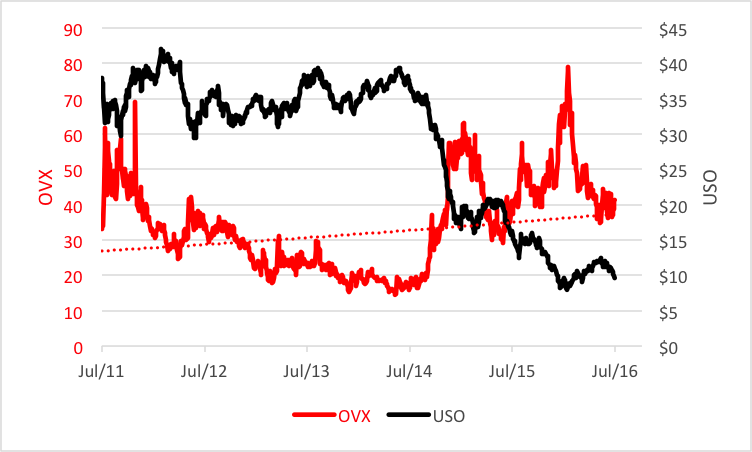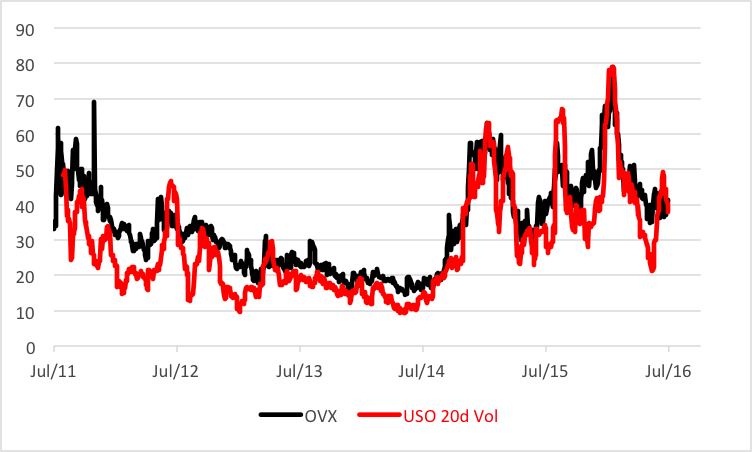There are drawbacks to being a financial journalist. It’s like being a financial advisor. People constantly ask for tips.
“What do you think about oil?” asked my friend at last night’s baseball game.
“Oil? Well, I like olive oil, but we picked up some avocado oil the other day. Works great for pan frying and ….”
“No, dummkopf!” my pal interjects. “CRUDE oil! I bought USO a while back just in time for oil’s swan dive.”
USO, if you’re not familiar with the ETF, is the United States Oil Fund, a portfolio that maintains a rolling long position in crude oil futures. Over the past couple of years, USO’s share price has slumped from $40 to $10.
“Ouch!” says I. “You’re holding on for a recovery?”
“Oh, I’m holding on all right,” he says, “but I’ve taken to writing calls against my ETF. I managed to bank some premium but I worry that I’m not collecting enough. Got any ideas?”
Ideas? Ideas are my business. Of course I have ideas.
Writing covered calls, I told him, is a smart way to lower his USO basis in a flat or modestly bearish market, but in a steep downturn that strategy won’t provide much protection. The maximum benefit, of course, is derived when one sells calls that are “rich”—contracts whose premiums are overpriced.
How do you know when USO options are expensive? Watch the OVX, the CBOE Oil Volatility Index. OVX uses the same methodology to gauge fear in the oil market as VIX does for stocks. And, not surprisingly, OVX is inversely related to USO’s price: OVX spikes upward as oil’s—and USO’s—price tumbles.

Over the past five years, OVX has averaged a reading of 34 (34 percent annualized volatility). Right now, OVX is at 41. Does that mean USO options are rich? Maybe, but there’s a better way to assess the plumpness of USO’s premiums: compare OVX—the expected volatility—with USO options’ actual, or historic, volatility.
Annualize USO’s daily returns for the past 20 trading days and you’ve got a track record you can lay next to OVX. Historic volatility is depicted by the red line in the chart below; OVX by the black.

The best time to consider an option sale is whenever the black line’s above the red. Right now, with OVX at 41, historic volatility stands at 38—a three-point fear premium. USO options are a little pricey currently.
But over the past five years, the OVX fear premium’s averaged six points. You’re better off waiting for a fear premium higher than that before writing options.
In an upcoming Market’s Measure, perhaps after another ball game, we’ll look at a strategy that could improve my call-writing friend’s breakeven point further without adding more downside risk. He’ll owe me a hot dog for this, though.
Brad Zigler is WealthManagement's Alternative Investments Editor. Previously, he was the head of Marketing, Research and Education for the Pacific Exchange's (now NYSE Arca) option market and the iShares complex of exchange traded funds.





